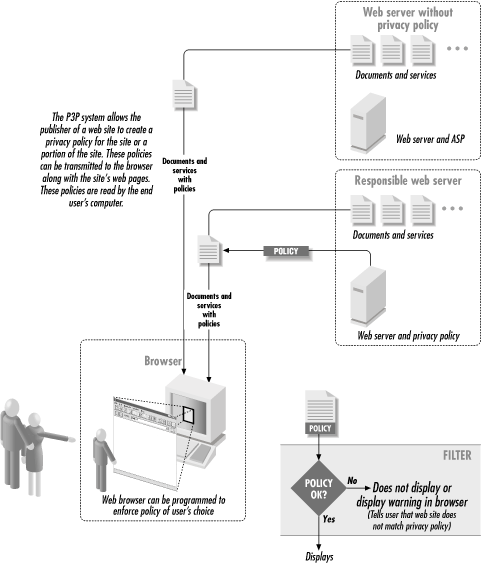P3P
The World Wide Web Consortium’s Platform for Privacy Preferences Project (P3P) provides a standard way for web sites to communicate about their practices regarding the collection, use, and distribution of personal information. This section provides a brief introduction to P3P, and Figure 24-3 illustrates the P3P process; Appendix C contains more detailed technical information about the protocol.

Figure 24-3. How P3P works
P3P and PICS
P3P is an outgrowth of the W3C’s earlier work on its web site rating and filtering technology, PICS (see Chapter 23). The idea behind PICS was that web sites would be rated regarding their content, web browsers would download these ratings, and parents could program their children’s computers so that web pages that violated the parent’s standards would not be displayed.
The P3P system supports many of these concepts. Instead of using the formalisms of PICS to rate their adult content, web sites and online services use the formalisms of P3P to describe their policies regarding data collection and use. These descriptions can be downloaded from the web site to the browser when the web pages are viewed. If the web site’s policies do not agree with the policies identified by the user, the browser can either warn the user or disable certain functionality. For example, a web browser could be programmed to discard any cookies from a web site that claims to use ...
Get Web Security, Privacy & Commerce, 2nd Edition now with the O’Reilly learning platform.
O’Reilly members experience books, live events, courses curated by job role, and more from O’Reilly and nearly 200 top publishers.

